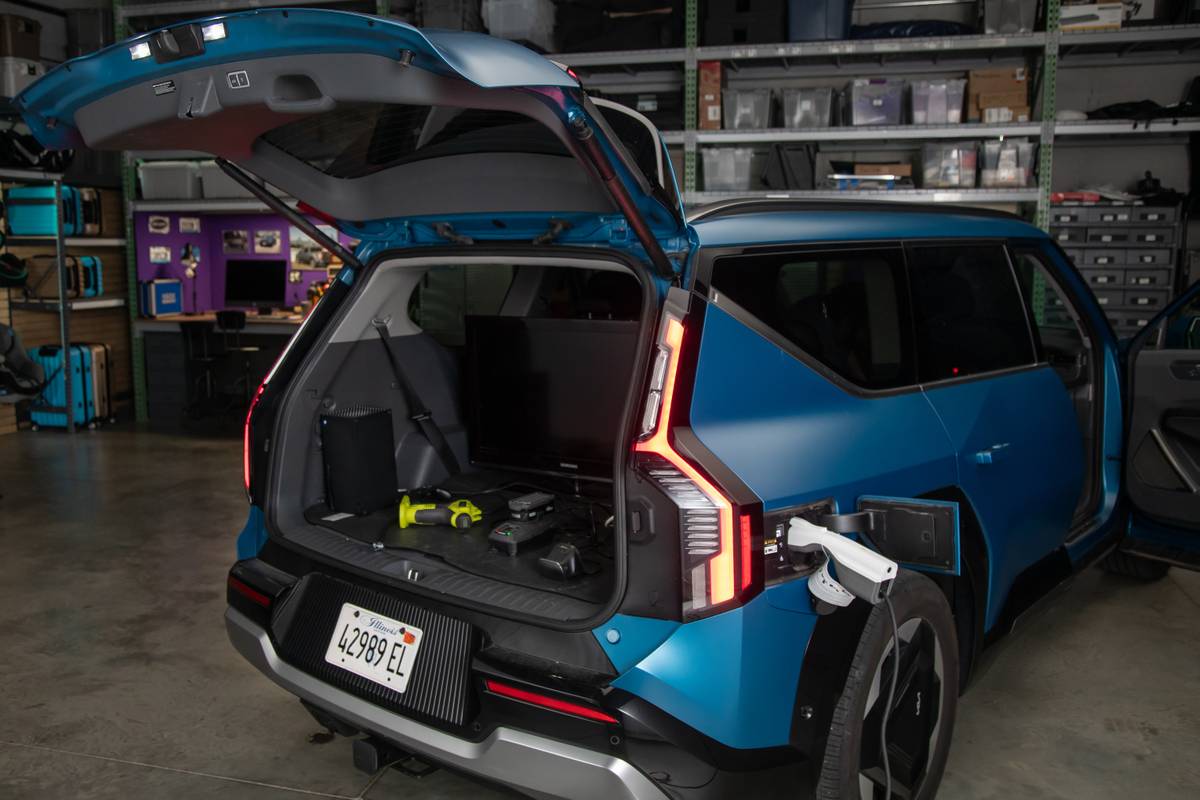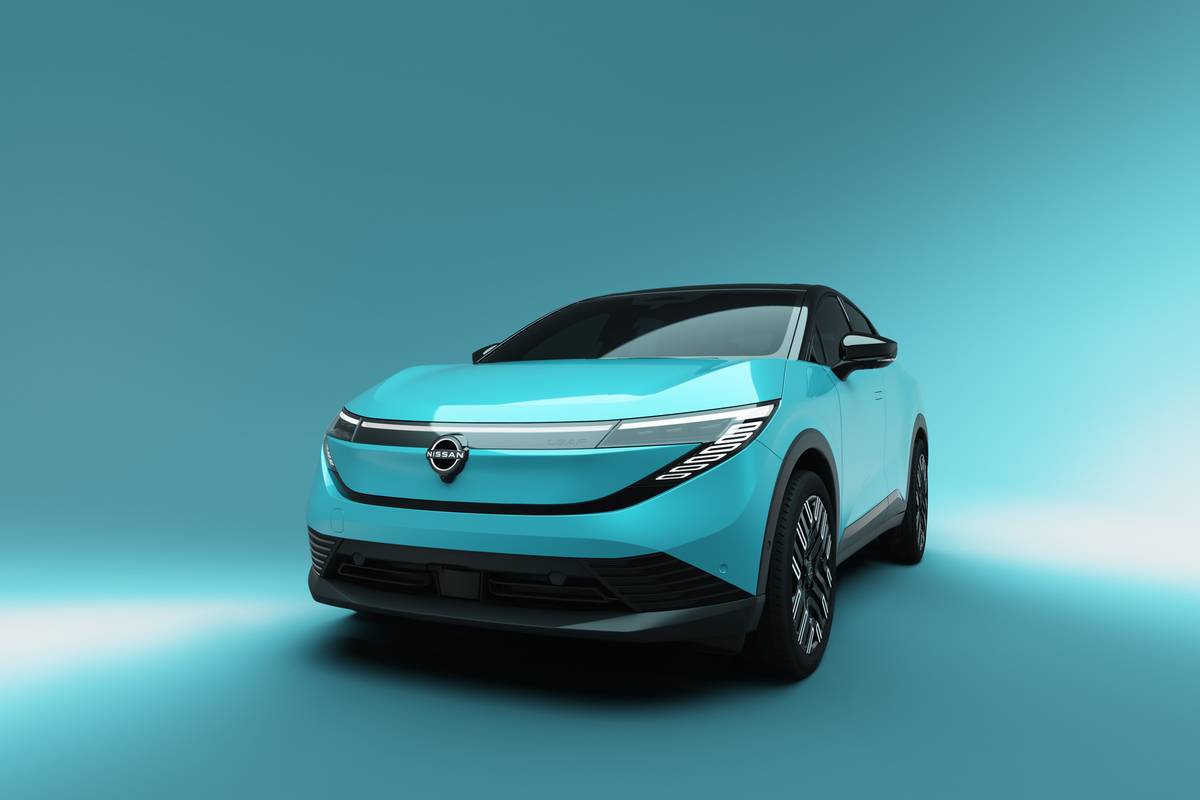The Detroit News's view
DETROIT–The assembly-line workers who put together the 2003 Maybach in Sindelfingen, Germany, wear white gloves.
It’s a nice, Jeeves-like touch when you consider this is an aristocratic vehicle that starts at under $300,000 and can be ordered with a rear-seat humidor, granite trim and reclining rear “thrones” with heat-and-massage functions.
Don’t forget the custom-made champagne flutes that fit precisely into the rear console, the standard refrigerator, the 10 air bags or the 543-horsepower twin-turbo V-12 engine.
There’s an overhead console in the rear with speedometer and temperature gauges — the ultimate nod to back-seat drivers.
Maybach has two separate air conditioning systems for front and rear, the better to keep everybody cool. And it features two LCD monitors built into the backs of the front seats that even get network TV, along with a 600-watt, 21-speaker Bose sound system.
This super-luxury sedan, which goes on sale next spring in North America, is the first offering put forth by the new, high-end luxury brand within the DaimlerChrysler Group as a separate unit under Mercedes-Benz. It is named after Wilhelm Maybach, the legendary chief engineer of the first Mercedes.
Maybach developed the engines that propelled Germany’s Zeppelin airships. In 1930, he unveiled the V-12 Zeppelin limousine, Germany’s largest luxury car. Mercedes-Benz says original Maybachs were the preferred ride of chauffeured royalty, including Haile Selassie, the former emperor of Ethiopia, and King Paul of Greece. Maybach has been a dormant brand, though, for more than 60 years.
The resurrected Maybach offers us a peek into an exclusive auto world.
It is occupied by people so wealthy they don’t have fleets of cars, they have “wardrobes” of vehicles that they use to complement what they are wearing, according to Maybach brand manager Wayne Killen.
When Daddy Warbucks decides to plunk down the required $50,000 cash down payment (refundable up until the time of production) to get one of about 500 Maybachs that will be sold in the U.S. annually, he will not be doing anything as tacky as “ordering” a car.
“You commission it, much like a work of art,” Killen says.
No mere one-page order form or tasteless brochure with the Maybach. And no plebeian advertising. Prospective customers will be schmoozed at “exclusive brand events,” such as four-star restaurants and championship golf courses.
Once sold, buyers will meet in a ritzy studio within one of 75-85 U.S. Maybach franchises with their “relationship manager,” part salesperson and part concierge, who will oversee a transatlantic teleconference between the buyer, and designers and craftsmen in Germany, as the hand-built Maybach’s details are hashed out.
Tough decisions will have to be made, such as whether to order the standard Maybach 57, which comes in at 5.7 meters long (just under 19 feet) or the Maybach 62, which at 6.2 meters long (ove r 20 feet) is the longest production vehicle in the world. The big one is probably the way to go since it can accommodate the special rear aircraft-style seats with pushbutton reclining leg and foot supports.
Buyers will struggle with which one of three moonroofs to choose, including an industry-first “electro-transparent” roof with a unique lattice pattern that can set the mood with clear or opaque-lighted glass.
And they can pick their favorite combination of exterior two-tone paint, perhaps the most notable design feature on a car that’s very understated and surprisingly free of Mercedes-Benz logos.
Once the deal is struck, the buyer will receive a parchment certificate that looks suspiciously like an Ivy League diploma, hand-signed by Professor Juergen Hubbert, head of Mercedes-Benz’ passenger car, Maybach and Smart divisions, along with a leather-bound portfolio holding selected paint, wood and leather samples. The buyer will also take home an early design sketch of the car encased in glass.
Mercedes-Benz officials like to wrinkle their noses as if they’ve smelled something gone bad when you ask them whether the Maybach is set to compete with other tony products, such as the $235,000 Rolls Royce Silver Seraph or $250,000 Bentley Arnage.
“No, no,” insists Paul Halata, Mercedes-Benz USA president and CEO. “It competes with fine jewelry and houses, not cars. Patek Phillipe watches, light aircraft, European vacations.”
Just for the record, it doesn’t appear to bother Mercedes officials like Halata that the boom is over and the news is filled with the Martha Stewart mess, corporate accounting scandals and the death of the dot-com era.
There’s still plenty of money floating around out there among the richest of the rich.
Killen and Halata like to point out that the U.S. is the wealthiest car market in the world, and that half of the world’s billionaires live here.
Brand manager Killen says that, among this privileged group made up of corporate executives, sports figures and Hollywood celebrities, only 6 percent attribute their fortunes to the Internet.
“Purchasing patterns are strong,” Killen says. “They are confident about their economic future.”
CEO Halata does not anticipate that the ultra-rich will defer a Maybach purchase, even in slightly trying times.
“If somebody drops down from $2 billion to $500 million, they aren’t going to change their lifestyle,” Halata says with confidence.
Inside the Maybach
For Maybach 57 (standard) and Maybach 62 (long wheelbase) models.
Type: Super-luxury sedan
Length: 225.3 in. or 242.5 in.
Wheelbase: 133.5 in. or 150.7 in.
Engine: 5.5-liter V-12
Output: 543-horsepower
Torque: 664 lbs-ft
Weight: N/A
Price: Starts at under $300,000
Fuel economy: Not available yet, although Mercedes officials say it will get better than 10 miles per gallon.
Latest news



